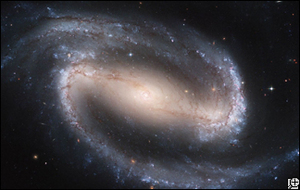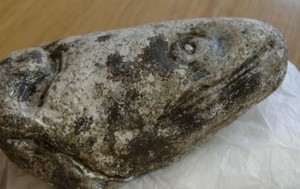
|
| ©Gerilyn Soreghan |
| Unaweep Canyon in the Rocky Mountains is the site of a deep gorge that reveals ancient landscapes and sediments. The inset image is of a "dropstone" from an eons-old glacier. |
Geoscientists have long presumed that, like today, the tropics remained warm throughout Earth's last major glaciation 300 million years ago.
New evidence, however, indicates that cold temperatures in fact episodically gripped these equatorial latitudes at that time.
Geologist Gerilyn Soreghan of Oklahoma University found evidence for this conclusion in the preservation of an ancient glacial landscape in the Rocky Mountains of western Colorado. Three hundred million years ago, the region was part of the tropics. The continents then were assembled into the supercontinent Pangaea.
Soreghan and colleagues published their results in the August 2008, issue of the journal Geology.









Comment: The notion that "we can do something about this" may be an indulgence in more than a little wishful thinking.